Serving 393 students in grades Prekindergarten-5, Madison Elementary School ranks in the bottom 50% of all schools in Texas for overall test scores (math proficiency is bottom 50%, and reading proficiency is bottom 50%).
The percentage of students achieving proficiency in math is 30-34% (which is lower than the Texas state average of 41%). The percentage of students achieving proficiency in reading/language arts is 35-39% (which is lower than the Texas state average of 51%).
The student:teacher ratio of 15:1 is higher than the Texas state level of 14:1.
Minority enrollment is 98% of the student body (majority Hispanic), which is higher than the Texas state average of 75% (majority Hispanic).
Quick Stats (2025)
- Grades: Prekindergarten-5
- Enrollment: 393 students
- Student:Teacher Ratio: 15:1
- Minority Enrollment: 98%
- Overall Testing Rank: Bottom 50% in TX
- Math Proficiency: 30-34% (Btm 50%)
- Reading Proficiency: 35-39% (Btm 50%)
- Science Proficiency: 11-19% (Btm 50%)
- Source: National Center for Education Statistics (NCES), TX Dept. of Education
Top Rankings
Madison Elementary School ranks among the top 20% of public schools in Texas for:
Category
Attribute
Percent Eligible For Free Lunch
School Overview
Madison Elementary School's student population of 393 students has declined by 24% over five school years.
The teacher population of 27 teachers has declined by 20% over five school years.
Grades Offered
Grades Prekindergarten-5
Total Students
393 students
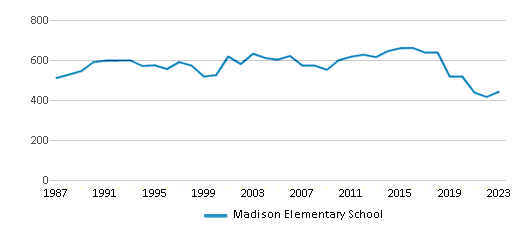
Gender %
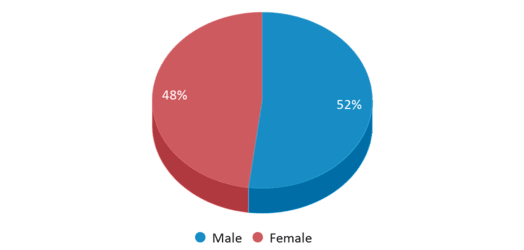
Total Classroom Teachers
27 teachers
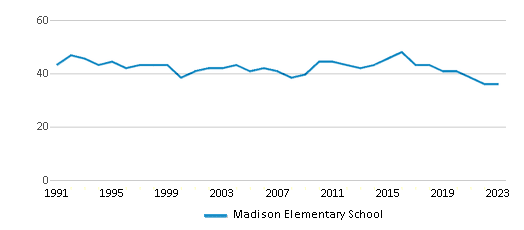
Students by Grade
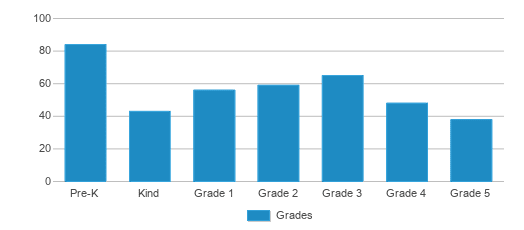
School Rankings
Madison Elementary School ranks within the bottom 50% of all 8,188 schools in Texas (based off of combined math and reading proficiency testing data).
The diversity score of Madison Elementary School is 0.10, which is less than the diversity score at state average of 0.64. The school's diversity has stayed relatively flat over five school years.
Overall Testing Rank
#6080 out of 8188 schools
(Bottom 50%)
(Bottom 50%)
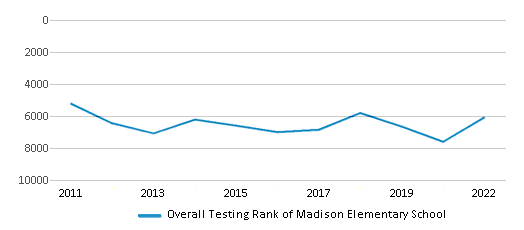
Math Test Scores (% Proficient)
30-34%
41%
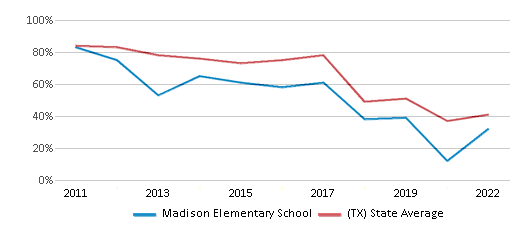
Reading/Language Arts Test Scores (% Proficient)
35-39%
51%

Science Test Scores (% Proficient)
11-19%
46%
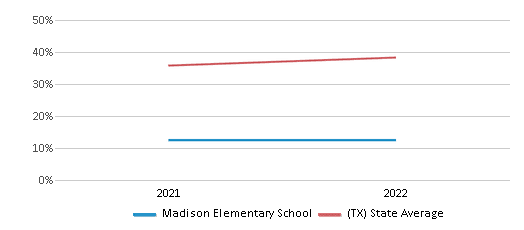
Student : Teacher Ratio
15:1
14:1
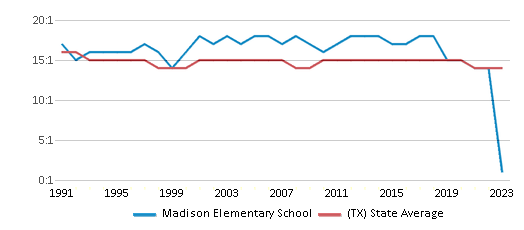
American Indian
1%
n/a
Asian
1%
6%
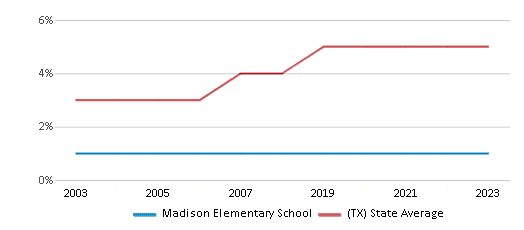
Hispanic
95%
53%
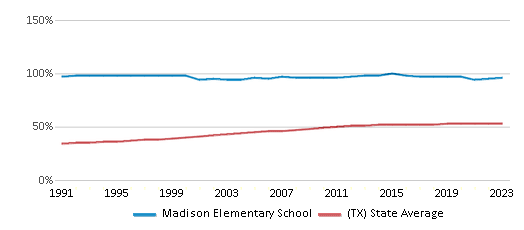
Black
1%
13%
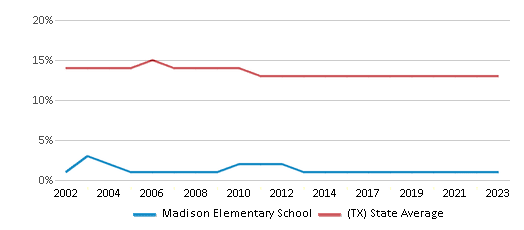
White
2%
25%
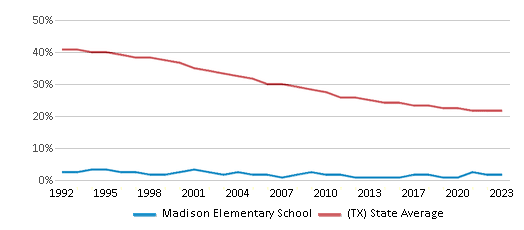
Hawaiian
n/a
n/a
Two or more races
n/a
3%
All Ethnic Groups

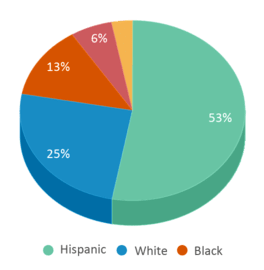
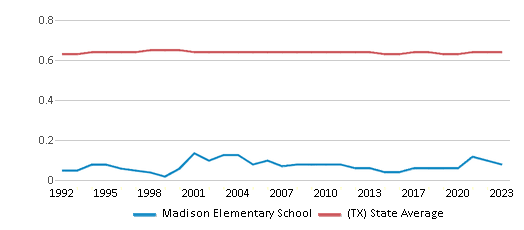
Participates in the National School Lunch Program (NSLP)
Yes
Eligible for Free Lunch
93%
57%
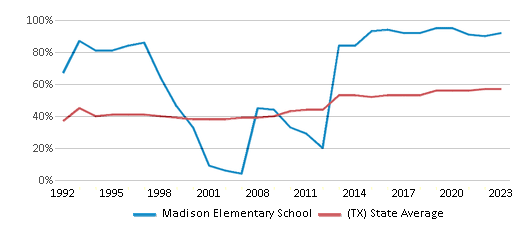
Eligible for Reduced Lunch
1%
5%
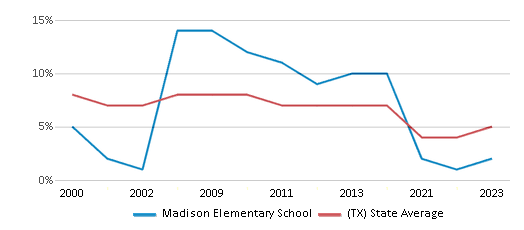
School Statewide Testing
School District Name
Source: National Center for Education Statistics (NCES), TX Dept. of Education
Profile last updated: 02/09/2025
Frequently Asked Questions
What is Madison Elementary School's ranking?
Madison Elementary School is ranked #6080 out of 8,188 schools, which ranks it among the bottom 50% of public schools in Texas.
What percent of students have achieved state testing proficiency in math and reading?
30-34% of students have achieved math proficiency (compared to the 41% TX state average), while 35-39% of students have achieved reading proficiency (compared to the 51% TX state average).
How many students attend Madison Elementary School?
393 students attend Madison Elementary School.
What is the racial composition of the student body?
95% of Madison Elementary School students are Hispanic, 2% of students are White, 1% of students are American Indian, 1% of students are Asian, and 1% of students are Black.
What is the student:teacher ratio of Madison Elementary School?
Madison Elementary School has a student ration of 15:1, which is higher than the Texas state average of 14:1.
What grades does Madison Elementary School offer ?
Madison Elementary School offers enrollment in grades Prekindergarten-5
What school district is Madison Elementary School part of?
Madison Elementary School is part of San Antonio Independent School District.
In what neighborhood is Madison Elementary School located?
Madison Elementary School is located in the Near Northwest neighborhood of San Antonio, TX. There are 10 other public schools located in Near Northwest.
School Reviews
2 6/8/2009
Madison Elementary focuses more on the challenged student. They do not have a system where the advanced student and the average student and the challenged student are separated so that they can learn at their pace. It's fine that no student is left behind but the advanced student is left alone without progressing so that the slower learning student can catch up. The staff at Madison is ok for the most part but they do have their share of ignorance. I have witnessed teachers belittle students and the students do not get a recess. They cannot even talk in the lunch room. Students are told to take naps or read books in the cafeteria after they're done eating. This is ridiculous! Some teachers seem like they don't even like their jobs and do not have patience with students. They should have chosen a different profession!
Review Madison Elementary School. Reviews should be a few sentences in length. Please include any comments on:
- Quality of academic programs, teachers, and facilities
- Availability of music, art, sports and other extracurricular activities
Recent Articles

What Is A Charter School?
Explore the world of charter schools in this comprehensive guide. Learn about their history, how they operate, and the pros and cons of this educational innovation. Discover key facts about charter schools, including admission policies, demographics, and funding, as well as what to look for when considering a charter school for your child.

10 Reasons Why High School Sports Benefit Students
Discover the 10 compelling reasons why high school sports are beneficial for students. This comprehensive article explores how athletics enhance academic performance, foster personal growth, and develop crucial life skills. From improved fitness and time management to leadership development and community representation, learn why participating in high school sports can be a game-changer for students' overall success and well-being.

February 05, 2025
Understanding the U.S. Department of Education: Structure, Impact, and EvolutionWe explore how the Department of Education shapes American education, from its cabinet-level leadership to its impact on millions of students, written for general audiences seeking clarity on this vital institution.





